Discover The Business of Fashion Podcast
The Business of Fashion Podcast

The Business of Fashion Podcast
Author: The Business of Fashion
Subscribed: 9,283Played: 239,990Subscribe
Share
© Copyright 2020 All rights reserved.
Description
The Business of Fashion has gained a global following as an essential daily resource for fashion creatives, executives and entrepreneurs in over 200 countries. It is frequently described as “indispensable,” “required reading” and “an addiction.”
Hosted on Acast. See acast.com/privacy for more information.
584 Episodes
Reverse
Instead of his usual place in the host’s seat, BoF founder and CEO Imran Amed appears this week as a guest in an interview with Jonathan Wingfield, editor-in-chief of System Magazine, alongside Luca Solca, senior analyst of global luxury goods at Bernstein — as featured in the second issue of System Collections.Recorded in late October, their discussion maps a luxury market defined by expectation swings, tighter cost control and headline creative resets, with pricing and value now at the centre of the consumer equation. Amed and Solca examine how luxury groups are refocusing, why design-led and more accessibly priced players are gaining ground, and the conditions required for a genuine comeback at the top end.“Everyone seems to be fascinated with the ultra-wealthy spending, exorbitant amounts of money, but they are not the majority of the market — they are a portion at most,” says Solca.Amed agrees. “Nobody out there really thinks any of these prices are justified,” he says. “One of the big conundrums facing the industry is, how do they restructure that pricing pyramid? They can’t just reduce prices on the existing products that are in their core collection because that’s almost an admission of having broken that ceiling down.”Key Insights:After years of price hikes, the industry hasn’t just met its price ceiling — it “broke through that ceiling, smashed it to bits,” argues Amed. The core dilemma now is rebuilding the pricing pyramid without publicly walking back on prices. “I just think some of the executives in the industry are just completely out of touch with how the average customer feels. That’s not just aspirational middle-class customers, that’s also the ultra wealthy customers. Nobody out there really thinks any of these prices are justified,” says Amed.Solca warns that chasing the top end customer cannot be the only approach for brands. “Everyone seems to be fascinated with the ultra-wealthy spending exorbitant amounts of money, but...they are not the majority of the market. They are a portion at the most,” says Solca.However, price inflation at the very top has created space just below what’s considered traditional luxury for design-led brands with sharper value. “It’s opened up a really interesting opportunity for smaller brands that are highly creative,” Amed says. He points to labels “just below luxury and just above US contemporary,” where distinct product and accessible pricing meet demand for uniqueness.For Amed and Solca, the formula for success is for brands to bridge their DNA with the cultural zeitgeist and deliver real value to customers. Chasing trends that deny what a house stands for won’t work, like “Gucci trying to look quiet is like a zebra camouflaging as a lion,” says Solca. Amed adds the customer value test in “the relationship between what a customer pays and the perceived value of what they get in return.” If brands fail that test, “they’ll be less and less a part of that overall mix of what customers spend their money on.”Additional Resources:Jonathan Wingfield | BoF 500The Debrief | 5 Big Questions About LuxuryPrada’s Versace Acquisition Closes, Now the Real Work Begins Hosted on Acast. See acast.com/privacy for more information.
Luxury’s most eventful year in some time is closing with a bang. From Prada’s Versace acquisition to Matthieu Blazy’s debut Chanel Métiers d’Art collection, seismic industry developments are landing on an almost daily basis.In this episode of The Debrief, senior correspondent Sheena Butler-Young and executive editor Brian Baskin are joined by BoF’s Luxury editor Robert Williams, who unpacks all of the industry’s most pertinent news, including the strategic implications of A$AP Rocky’s partnership with Chanel, the rise of the beaten up handbag, and the future of luxury in 2026.Key Insights: The luxury market’s forecast is cautiously optimistic, relying heavily on Chinese consumers and designer-led resets to revive the industry. Brands also need to grapple with justifying value after aggressive price increases in recent years. “Pricing’s certainly going to be an issue and it’s going to be a big issue in the US, which is a really key market for maintaining the brand’s top line,” Williams said.With Prada’s acquisition of Versace closing this week, it remains unclear as to whether the brand will continue with Dario Vitale’s new approach to Versace, or steer towards a more classic, glossy aesthetic. “[Versace] has gone through a pretty radical shift over the past couple of months and whether or not [Prada’s] going to want to continue with that is the biggest most urgent decision, and for them to clarify that for the market,” Williams said.Luxury dining is becoming increasingly popular across the world, but can luxury chains like Langosteria remain cool as they expand? “Fashion once upon a time was all made by your local tailor, your local couturier, and once they decided they could scale taste, that was more desirable than just having something that was more small-scale … In food it seems like it’s kind of the opposite,” Williams said.Originally inspired by Jane Birkin and Mary-Kate and Ashley Olsen, beaten up bags are everywhere in luxury fashion today. “There’s something about the fact that, no matter how much you wear out that bag and trash it, it’s still not going to break and fall apart. I think it just makes it a really cool style gesture. It shows you’re not someone who just bought into it yesterday,” Williams said.Additional Resources:Prada’s Versace Acquisition Closes, Now the Real Work BeginsHow Beat-Up Bags Became a Luxury Status SymbolBreaking Down Chanel’s A$AP Rocky Partnership Hosted on Acast. See acast.com/privacy for more information.
Francesco Carrozzini grew up inside the rarefied world of Vogue Italia — not just observing it, but living it. As the son of Franca Sozzani, the magazine’s legendary editor-in-chief, fashion wasn’t just part of his surroundings, it was a language he was exposed to everyday.He became a photographer and filmmaker, but it was only later that he turned the camera towards the most personal and complicated subject in his life: his relationship with his mother. The documentary Franca: Chaos and Creation premiered in Venice just before her passing in 2016 following a battle with lung cancer. “When I asked her to take a look at the first cut of the film, she said, ‘This is the most mediocre thing I've ever seen. Do yourself a favor and find a point of view.’ That opened my eyes on the importance of always trying to find a point of view,” Carrozzini recalls. “In a regular relationship between mother and son, that might have been excruciating. In ours, it wasn't, because we treated each other like friends.”Since Franca’s passing, Carrozzini has been working to transform memory into meaning. He co-founded the Franca Fund for Preventive Genomics — an initiative advancing genomic screening to prevent the disease that took his mother’s life. BoF founder and CEO Imran Amed met Carrozzini in Doha, Qatar, where last weekend he hosted the fund’s first-ever gala and they spoke about what it means to honour someone not by preserving their legacy, but by evolving it.Key Insights: Growing up inside Vogue Italia shaped Carrozzini's eye and his expectations of 'normal'. He recalls going to the offices, and making his own magazines. "This was a time before computers so they were cutting up pictures and there was spray glue. [...] That's how magazines were made. I would go and do the same,” he says. "That was my special big extended family, because my mother's job was her life." Beyond the film itself, Carrozzini shared that it was the end-of-life collaboration that mattered the most. “The actual big stories were those last months of our relationship, finishing the film and then screening it in Venice,” he says. “All of a sudden the lights turn on and everyone's crying because some people know, some people don't, but we look at each other and we're like, ‘This is sort of like our last big moment together.’”Carrozzini clearly distinguishes tribute from true legacy. “Memory and legacy often get confused. Just remembering someone feels like you're carrying their legacy, but it's not. I really wanted something meaningful, as an act of love, taking something personal and making it collective.” That impulse led Carrozzini to genomics research with Harvard geneticist Dr Robert Green, backing pioneering newborn-genome studies and accelerating grants. Additional Resources:Fashion Trust Arabia Names Prize Winners in Qatar | BoF Franca Sozzani, 1950 - 2016 | BoF Hosted on Acast. See acast.com/privacy for more information.
As the holiday shopping season approaches, consumer sentiment is slumping, yet spending is bifurcated – the top end keeps buying while the bottom 80 percent is more cautious. With Black Friday looming, brands are recalibrating promotions around value, desirability and hero products rather than blanket discounts. In luxury, upheaval at several department stores has created white space for rivals to woo high-spending clients through aggressive clienteling and tighter, faster vendor partnerships. In this episode of The Debrief, hosts Brian Baskin and Sheena Butler-Young speak with BoF reporters Cat Chen and Malique Morris about how brands are planning the season.Key Insights: Consumer spending hasn’t vanished, but it’s shifted toward shoppers who still feel flush. As Chen notes, “people are not really feeling rosy about the state of the economy, but the irony is that they’re still spending money.” Since Covid, “spending has been driven by the wealthier segment,” and it’s clear that “what consumers want is value… they want to get a good deal, but they don’t want to buy a cheap product.” For retailers, that means “more sophistication around price architecture” and using AI “to price products perfectly.”“Black Friday–Cyber Monday is not a fix for a mediocre year,” says Morris. Instead, winners are “prioritising desirability over discounts,” introducing “new products specifically for this time” and pushing “hero best-selling product.” The old playbook is out, and “slapping a 50% off everything discount on Instagram is not gonna cut it,” says Morris. In the “age of curation,” even deal-hunters expect editing, storytelling and reasons to stop scrolling.Morris argues that even in a discount-driven moment like Black Friday, shoppers still want offers to feel edited and intentional, and brands are responding with more curated tactics rather than blanket markdowns. “We’re in the age of curation and so even when people are expecting deals, they don’t want to feel like they’re just getting slopped,” says Morris. Tariffs and margin pressure mean many brands cannot afford a race to the bottom, pushing them to plan inventory more carefully, introduce new products specifically for this period and reserve discounts for hero items.Chen explains that this holiday season is especially high stakes for luxury multi-brand retailers because a few big players are stumbling – and everyone else is trying to capitalise. “Saks and SSENSE and Luisa Via Roma are three players that have faced pretty bad challenges this year,” she says. “They have opened up white space for their competitors on healthier financial footing to come in and basically eat their lunch and acquire their customers, acquire their sales.” The response is an aggressive push on clienteling and talent: retailers are not just targeting wealthy individuals, but also the salespeople and stylists who already manage those relationships.Additional Resources:Brands Try to Get the Tone Right for Holiday 2025 | BoF Inside Luxury Retailers’ Bare-Knuckle Fight to Win the Holidays | BoF Black Friday Beauty Goes Beyond the Discount | BoF Hosted on Acast. See acast.com/privacy for more information.
Over the last two years, demand for luxury fashion has softened as aspirational shoppers have pulled back and consumer fatigue has crept in. Yet, Prada Group has continued to grow, by prioritising brand DNA, employing disciplined curation and creating strong connections to contemporary culture.“Prada is culture, culture is discussion, culture is opinions. The more you’re discussed, the more you’re able to be influenced by other people's opinions. I think this is unbelievably fruitful,” says Guerra. “This is not a vertical thing; it's a total constant confrontation and change of opinions. This is how things are born in the Prada brand – and I love it.”This week on The BoF Podcast, BoF founder Imran Amed quizzes Mr Guerra on the luxury business model from developing pricing strategies to the importance of creative tension and cultural relevance.Key Insights: To navigate a shaky market, brands need to simplify and go back to their DNA. “Brands have gone all over in the past 10 years. And I think that today it's a time that you simplify and you do your own thing,” says Guerra. “Your brand has a DNA, and that DNA cannot be killed in the long term …This is where people are recognising you, so you need to go back there. There are certain things we need to do better again, but better again means to go back some years. ” On the industry’s post-pandemic price hikes, Guerra says “If I’m not able to sell you an emotion, then we discuss pricing. If we discuss pricing, then I’ve failed on the first part.” Some brands, he adds, have been spoilt by certain trends, like inflation. “At a certain stage for some brands it was easy just to increase prices,” he says. Now Guerra says, “we’re back to normal” — and the conversation should return to “creativity, innovation [and] our ability to tell people about emotions.”The decision to acquire Versace was a strategic, long-term bet.. “Versace is a fantastic Italian, authentic, unique, credible brand which has a huge complementary role inside our group … hitting different aesthetics, different consumer bases,” yet sharing roots in culture. The mandate is steady, patient value-building. “There are no broken things. We have an opportunity, and the opportunity is long term. I’m not expecting any sort of tangible numeric result tomorrow morning. We have fixed certain milestones which are very important, but it will take time. And we have the patience.”For Guerra, durable desirability is born from managed friction. “There is a history of relationship and tension between the DNA of a brand and a creative impulse, and this tension in the long term must be a positive equation,” he says. “When I talk about culture, we are doing culture ourselves … When you are buying a Prada product, you are buying an opinion, and I am happy that you’re buying an opinion.”Additional Resources:BoF VOICES 2025: Untangling the Fashion Industry’s Future Prada’s Lorenzo Bertelli to Become Versace Executive Chairman | BoF Hosted on Acast. See acast.com/privacy for more information.
As COP30 gets underway in Belém, a port city on the edge of the Brazilian rainforest, the mood is sober. A decade after the Paris Agreement was adopted internationally to limit global warming, many of the world’s largest fashion companies have fallen short on emissions cuts — and some are moving in the wrong direction, emitting pollutants at an even higher rate than in previous years.In this episode of The Debrief, senior correspondent Sheena Butler-Young and executive editor Brian Baskin are joined by BoF reporters, Sarah Kent and Shayeza Walid, to examine why progress has stalled, how fast-fashion growth is reshaping the landscape, and what practical steps — from decarbonising supply chains to adapting factories to extreme heat — are needed next. Key Insights: Kent says, “I would not say any brand has a credible pathway right now to meet their targets for 2030,” “Even companies that have shown that they’re able to reduce their emissions to date, driving down their carbon footprint over the next five years is going to be harder, more complex and more costly… and really no one company can do that alone.”Kent highlights the industry’s deep structural bind: “The fundamental conflict at the heart of the fashion industry’s climate commitments is that you’ve got a business built on extracting stuff and producing stuff and selling stuff. The more stuff they sell, the better the business does, but the worse the environmental impact is,” “Profitability and sales growth are fundamentally at odds with the environmental commitments companies have made.”Short-term thinking still in the boardroom locks in higher climate impacts, adaptation costs and supply-chain risk. As Kent puts it, “On climate, if you don’t act, you don’t have to make these big investments, and you can keep growing your business and things will trundle along for some time. But the longer you wait to act, the worse the climate impacts you’re going to have to deal with are going to be, and the higher the cost of mitigating them, adapting to them, and trying to continue this business in a climate-constrained world.”Voluntary commitments aren’t enough at fast fashion’s scale. Walid points to Shein: “Shein’s case is very instructive. There’s limits to voluntary commitments, which is what the majority of these brands have made.” She continues, “When the business model is built on speed and volume… it just shows that voluntary commitments are maybe not enough for a fashion brand – especially a brand as big as Shein – to actually tangibly reduce its emissions when its entire business case doesn’t stand for that.”Climate impacts are now serious human and corporate risks. “It’s not just a corporate issue anymore,” says Walid. “People who have the visuals recognise the reality of what’s happening in these factories and the people who are making clothes at the end of the day.” Kent adds: “People who are suffering from heat stress are not as productive… floods are disruptive to production, to logistics, to supply chains. Just because we have not yet seen a major disruption to the apparel supply chain from these climate crises yet is more luck than anything else.”Additional Resources:Can Fashion Still Meet Its Climate Promises? | BoF The Frayed Edge: Is Fashion Quiet Quitting on Climate? | BoF Hosted on Acast. See acast.com/privacy for more information.
Amber Valletta grew up in Tulsa, Oklahoma, spending time on her grandparents’ farm. Her childhood was defined by open fields, a freshwater creek and a simple rule from her mother: go outside and use your imagination.At 15, a local modelling class set her on an unexpected path that would take her first to Milan, and then around the world. Within a few years, Amber became one of the defining faces of 1990s fashion — the Tom Ford Gucci era, the great editorials and the campaigns that shaped a generation’s idea of beauty.But by her mid-20s, success had taken its toll. Amber stepped away from modelling, got sober, became a mother, pursued acting and found purpose in environmental advocacy. Today, as a United Nations Environment Programme goodwill ambassador, she’s using her influence to push for real change on climate, biodiversity and pollution.“I don’t make my life all about me,” she told me. “I make it about other people too — about connection and love. When you have that, life is so much more enjoyable.” This week on The BoF Podcast, BoF founder Imran Amed sits down with Amber Valletta to trace her journey from Tulsa to the world’s fashion capitals, how sobriety transformed her life at 25 and why she believes fashion must finally take responsibility for its impact on the planet.Key Insights: Valletta’s childhood in nature forged a creative compass and the ability to adapt anywhere.That self-reliance became a career asset when she landed in Europe as a teenager: “I have this strange thing that I’ve always had — it’s like wherever you plant me, I grow. I’m like a weed or something, like an Oklahoma weed.” Those early years also taught her to observe and self-teach: “No one taught me. I just started figuring it out … you look, you watch, you listen.”Opening Tom Ford’s Gucci Fall/Winter 1995 show gave Valletta a once-in-a-career jolt. “When I walked out on the runway, it was probably one of the few times I’ve had that adrenaline rush … that spotlight came on and boom,” Valletta recalls. The moment was so impactful because it diverged from what dominated the time: “Nothing looked like that … it was like a shot of adrenaline for everybody,” she says.Valletta was recently named UN Environment Programme goodwill ambassador, where she is focused on climate change, biodiversity loss and on “fashion’s role as one of the biggest polluters.” The brief is practical: “We need to invest in innovation and investment in decarbonisation … We need all hands on deck. We need collaboration,” she says, warning, “If it doesn’t change, we’re going to implode on ourselves.”Valletta’s guidance for a fulfilling life is simple: “Do what you love. Serve a higher purpose. Enjoy the moment. Enjoy where you’re at.” She couples that with practical habits for staying power. “I ask questions, I show up with a lot of gratitude … I try not to do too much so that when I show up to work, I’m fully present for everybody.” Additional Resources: Amber Valletta | BoF 500 | The People Shaping the Global Fashion Industry Can Fashion Still Meet Its Climate Promises? | BoF Hosted on Acast. See acast.com/privacy for more information.
Colourful charms, Labubu-laden handbags and a ring on every finger – accessories sales are booming. A surge of necklace stacks, playful rings and quirky charms is being driven by Gen Z’s push for personal style, using add-ons to customise minimalist wardrobes on a budget. With apparel prices up, accessories act as “little luxuries” and entry points into brands. Retail is responding, with buyers widening small-leather-goods assortments and e-commerce shoots now styling bags with charms to encourage add-on purchases. BoF reporter Diana Pearl joins The Debrief to unpack what’s fuelling the accessory pile-on, how labels are capitalising on it, and how far the trend can go before the cycle turns. Key Insights: According to Pearl, Gen Z is reaching for accessories as a way to personalise their minimalist wardrobes. “Gen Z, which is really looking to define their sense of personal style, is leaning on accessories to do so, especially because minimalism in clothing is still very popular… but they also wanna have a little more fun and accessories are a way to do that,” she says. Regarding the longevity of this trend, Pearl adds, “I think we'll see a consumer that is primed to think of accessories as a more important part of their wardrobe – not just like a finishing touch, but a core element of it.”The Labubu craze captures the mood of the accessories trend – playful, collective and endlessly customisable. “There’s so many different Labubus. There’s a bit of that thrill of the hunt to try to find the right one. You can add it to an Hermès bag or a $100 leather tote from J. Crew,” says Pearl. For many shoppers, she says, “it really speaks to that desire for fun and adding a personal touch. People want things that make them feel good.”While luxury houses profit from entry-level add-ons, Pearl sees independent makers riding the wave. “I think it probably is helping luxury brands but I think even more than that, it’s helping small brands that really can make these cute accessories that feel distinct and different from what everyone else has, because I think a huge part of this is that quest for personal style, wanting something unique,” says Pearl. Pearl frames the moment as a behavioural shift rather than a transient trend. She argues, “trends go away, but they never fully go away. I think every trend leaves a lasting impact or impression on us. Maybe Labubus, toe rings, and bag charms won’t be quite as popular, but maybe they’ll evolve.” Crucially, “I think that this has unlocked something in people… it will have a lasting after effects of this trend, even if not everybody is wearing five necklaces at once in a year from now.”Additional Resources:How Far Can Fashion’s Accessory Obsession Go? | BoF Why Jewellery Feels Like a Better Deal Than a Handbag | BoFLuxury’s Untapped Opportunity in Men’s Jewellery | BoF Hosted on Acast. See acast.com/privacy for more information.
Soon after sharing his graduate work from the London College of Fashion online, Hong Kong-born Robert Wun was approached by Joyce Boutique to buy his collection. Like many other independent designers, he found navigating the wholesale model challenging and during the pandemic he pivoted to serving clients with one-off, customised designs with couture level pricing. “I realised that, in order for me to have a strong wholesale business model or grow a brand, this is not the time yet,” Wun says. “For me to sacrifice all these years – to leave my family, to come all the way to London, to chase my dream – everything I create needs to have a responsibility, not only for myself but also for the message that I’m trying to relay.”This week on The BoF Podcast, BoF founder Imran Amed sit down with Robert Wun to discuss his path from Hong Kong to London to Paris Couture Week, and how he’s building a client-first business that protects his creativity while staying commercially viable.Key Insights: Hong Kong’s cultural imprint shaped Wun's eye from an early age. Growing up in a city he saw as a creative engine, Wun points to icons like Wong Kar-wai as inspiration, adding that “Hong Kong is almost a symbol of cultural leadership when it comes to Asia.” Wun recalls discovering how deeply global fashion intersected with the city, from Joyce Ma championing new designers to Jean Paul Gaultier creating stage pieces for musicians in Hong Kong. "You always had this idea that creativity was powerful ... but I think what changed was a shift in culture and economic power," he says.When pandemic lockdowns halted the regular fashion calendar, it provided a reset for Wun. Being forced to release his Autumn/Winter 2021 collection with an iPhone shoot done in his studio kitchen, made him prioritise meaning and message. “Everything I create needs to have a responsibility, not only for myself, but also for the message that I’m trying to relay,” he says. That conviction pushed Wun to prioritise work that is no longer “to make money” but rather “to communicate and be honest.” Wun has shifted from wholesale to bespoke orders and selective collaborations. “We are a team of almost twelve now. We’ve turned from not making any profit at all to actually starting to make profit since last year, and we’re almost doubling in terms of turnover by the end of this year,” he says. The core is a loyal private clientele, and demand is anchored in the US — particularly New York and Los Angeles millennials and Asian Americans — plus art collectors and couples seeking modern ceremony wear. “Our average for those couture orders ranges from £45,000 to £60,000,” Wun says, a mix that allows him to protect his creativity while running a commercially successful business.Additional Resources: Robert Wun | BoF 500 | The People Shaping the Global Fashion Industry Robert Wun: From Dalston to Place Vendôme | BoFThe Emerging Designers Pushing Fashion Forward | BoF Hosted on Acast. See acast.com/privacy for more information.
In late August, the US doubled duties on Indian goods to 50 percent, in what President Donald Trump described as a punishment for India’s purchases of Russian oil. Brands reacted immediately, postponing or cancelling orders and leaving factories in hubs like Tiruppur and Bengaluru half-filled. With shifts cut and workers laid off, the shock ricocheted through India’s export economy, exposing how little protection garment workers have while relief talks and trade diplomacy drag on.Senior correspondent Sheena Butler-Young and executive editor Brian Baskin are joined by BoF reporter Shayeza Walid to trace how trade policy in Washington quickly impacted the lives of India’s garment workers. Key Insights: The tariff that came into place at the end of August led some suppliers to feel “punished for something they didn’t have any hand in,” as Walid puts it. She adds: “That penalty was linked to India’s continued purchases of Russian crude oil,” and “it hit very fast because brands immediately reacted to it once the 50 percent came into place.”The disruption hit export hubs first and hardest. With brands reluctant to absorb the shock, factories have been left to “bear the brunt,” passing the pressure onto the most vulnerable link in the system. The result is workers facing furloughs, layoffs and open-ended uncertainty. “These workers are largely migrant workers who… don't have the power to collectively bargain and kind of demand what they have the right to”, says Walid. As a result, migrant garment workers are bearing the brunt through layoffs, furloughs and lost income. The response from Western brands has been silence and arm’s-length accountability, as most work through layers of sub-contractors in India. Walid says that, despite public rhetoric on labour rights, “in practice, there's not anything in place that would fix … these short-term contracts and brands not knowing where subcontracting factories are connecting with suppliers.” During Covid, watchdog pressure pushed some labels to repay cancelled orders, but “at this moment, that’s not something that we’re seeing,” Walid notes. In the meantime, a few large exporters are temporarily absorbing parts of the tariff to keep relationships alive – an approach suppliers themselves say is unsustainable – while smaller factories shut and workers absorb the shock.Beyond geopolitics, commercial terms and supply-chain opacity push risk onto workers. “It’s really the purchasing practice and the way contracts work in the supply chain. In the exporting industry, that leaves workers in this really helpless condition,” says Walid. Complexity of the system also weakens accountability: “It’s really extraordinarily difficult to get data and direct kind of causality from a particular brand,” and in hubs like Tirupur, “subcontracting factories are essentially the main suppliers to these bigger factories because they just get such large volumes.” Additional Resources:India’s Garment Workers Are Paying the Price for Trump’s Tariffs | BoF Trump’s 50% Tariff Sows Fear Inside Indian Apparel Hub | BoF Hosted on Acast. See acast.com/privacy for more information.
Born in Dubai in 1978 when the city was still a modest trading port, Khalifa Bin Braik has witnessed the city’s rapid transformation into a 21st-century global hub – and helped shape its retail landscape as CEO of Majid Al Futtaim Asset Management. Majid Al Futtaim is behind the $1.4 billion transformation of Dubai’s second largest mall, The Mall of the Emirates, adding 20,000 sqm of additional retail space and 100 new stores with an enhanced mix of dining, wellness and cultural concepts. This development is in addition to its newest flagship destination, Ghaf Woods Mall: a first-of-its-kind concept merging retail experiences with the natural environment. Bin Braik reflects on Dubai’s’s post‑pandemic acceleration and the company’s move from bricks-and-mortar stores to immersive third places. “In just over four decades, the economy has grown circa 22 times. But what's even more remarkable is the mindset that has fueled this growth,” says Bin Braik. “Dubai gives you the power to dream, plan, and execute flawlessly, all in one lifetime, really. It's a place that teaches you that nothing is too ambitious.” In this conversation with BoF founder Imran Amed, Bin Braik unpacks Dubai’s evolution, the transformation of physical retail, and where growth in the MENA region is coming from next.Key Insights: Post-pandemic, Majid Al Futtaim has shifted retail from pure brick-and-mortar to a fully immersive, experiential destination creator. “Consumers today demand more experiential, more curated spaces, but most importantly, with an intent or a very deep meaning and purpose.” Their formula blends retail with dining, entertainment and, crucially, wellness: “[Our] DNA is curating an immersive lifestyle destination, blending retail with dining, wellness, … entertainment and, most importantly, community.”According to Bin Braik, it’s a misconception that malls across the GCC region are homogeneous or that “only luxury” drives Dubai. “Each country has unique customer dynamics … demographics and cultural nuances,” and the “mid‑market and convenience‑driven segments are equally very, very important.” Physical retail “continues to thrive,” supported by strong tourism and integrated experiences.Egypt is a key region for a next‑wave opportunity. “Today, Egypt’s luxury market is … half of its true potential.” Despite challenges with imports, tariffs and infrastructure, Bin Braik argues that growth can be unlocked through investment and modernisation, with stabilisation “[paving] the way for a more vibrant luxury ecosystem market.” He adds: “I think very soon we'll start seeing investments into the luxury space within the Egyptian market.” To win in the MENA region, Bin Braik’s best advice for global brands is to “strongly lean on localisation and the right partnerships,” and not to underestimate cultural nuance. “Finding the right local partner with similar aspirations is key, but a partner that deeply understands the market and cultural heritage is so important.” This episode of The BoF Podcast is part of a paid partnership with Majid Al Futtaim.Additional Resources:How Dubai Is Defying the Luxury Downturn | BoFInside the Fashion Opportunity in Dubai | BoF Hosted on Acast. See acast.com/privacy for more information.
A new wave of AI shopping agents has emerged as Big Tech and start-ups alike vie for dominance of this new market. OpenAI, Google and Perplexity are experimenting with search-to-checkout, while fashion-specific entrants like Vêtir, Phia and Gensmo are learning users' tastes before recommending and purchasing across retailers. But before they get off the ground, trust, accuracy, privacy and simple usefulness remain open questions.Senior correspondent Sheena Butler-Young and executive editor Brian Baskin are joined by BoF reporter Malique Morris to map the agentic ecommerce landscape. Key Insights: AI shopping agents aim to move beyond static recommendations to truly act on a shopper’s behalf. As Morris explains, “traditional e-commerce has algorithms that recommend items based on what you’ve already browsed or purchased,” whereas “an AI shopping agent is supposed to learn the shopper and can act on their behalf,” handle “very specific prompts” and, ultimately, complete the transaction.Agents are trying to replicate the best in-store experience for the ecommerce space. “They’re supposed to be about replicating the in-store salesperson, surfacing the right piece based on the conversation that you might have,” says Morris. As a result, “it’s not calling for brands to rethink how they’re designing their goods,” but more about tools that “help them sell them better and help them get into the hands of the people who are actually really going to want them.”Early users are avid shoppers who love new technology. Morris doesn’t expect a sudden tipping point, but rather gradual mass adoption. “Agentic commerce is [already] here because the tools are being built and experimentation is happening,” he says. “People are going to be conditioned the same way that they were conditioned when Netflix rolled out their algorithms, the same way TikTok and Instagram have with ‘for you’ pages. It’s here, it’s happening and it’s only going to get more efficient.”While the consumer should benefit from this new suite of AI shopping agents, Morris is blunt about power dynamics: “Outside of ‘the consumer is going to win,’ I think it’s going to be who has the resources to perfect this.” Consolidation is to be expected as many smaller platforms are “probably going to get consumed into an OpenAI or a Google or an Amazon. Those already huge [players] are probably going to be the ultimate winners.”Additional Resources:What It Will Take for Consumers to Let AI Shop For Them | BoF Hosted on Acast. See acast.com/privacy for more information.
Irish designer Sinéad O’Dwyer grew up in a household of creative entrepreneurs. Her father was a silversmith and a sculptor, her mother was a music educator and her grandmother knit and sewed uniforms. Until the age of fourteen, there were no screens in her home, not even a TV. Instead, she was encouraged to read, craft and spend time outdoors. After studying in the Netherlands and a formative stint in the fashion industry, she developed a critical stance on the industry’s narrow body ideals. “I saw quite a lot of models who were visibly ill. This glorification of vulnerability was really bizarre. It felt really insane to me that on the runway they look so pulled together, but then actually behind the scenes, there are so many emotional struggles happening,” she recalls. “When you are wearing a garment, you are actually wearing an imprint of another person's body. ... I don't think people really understand that the fit model for a brand is so important.”This week on The BoF Podcast, Imran Amed sat down with Sinead to discuss her practice which centres on diverse bodies and finding practical, sustainable routes to market through direct to consumer, bespoke clients, and carefully chosen retail partners.Key Insights: As a trainee, O’Dwyer saw the jarring gap between runway images and backstage reality: “I saw quite a lot of models who were visibly ill … this glorification of vulnerability was really bizarre,” she recalls. “It felt really insane to me that on the runway they look so pulled together … but then actually behind the scenes, there are so many emotional struggles happening.” At the RCA, with Zoë Broach’s ethos of fashion as critical practice, she reframed her work toward contribution and change, interrogating fashion’s harmful beauty ideals. O’Dwyer’s MA research used live silicone casts of friends and family to visualise that “when you are wearing a garment, you are actually wearing an imprint of another person’s body.” She critiques reliance on a single fit model and historic blocks, instead creating new blocks “through my own gaze as a woman,” choosing what she finds beautiful and then cutting for that, before generalising across a collection.According to O’Dwyer, luxury brands tend to produce many styles in smaller quantities with fewer sizes. O’Dwyer’s answer to this problem is a mixed‑model delivery: keep wholesale tight, invest margin in made‑to‑order “at the same price as the ready‑to‑wear,” and prioritise pop‑ups and try‑on moments. The aim is fewer but better retail partners and closer relationships. Crucially, the industry-wise fix requires intent: “People have to care. There has to be an investment in the whole industry. Initially you will lose a bit of money because you have to invest in that customer and say, ‘we actually want to cater for you, we respect you’.”Additional Resources:The Emerging Designers Pushing Fashion Forward | BoF The Great Fashion Reset | Is Fashion Failing Emerging Designers? | BoFSinéad O’Dwyer | BoF 500 | The People Shaping the Global Fashion Industry Hosted on Acast. See acast.com/privacy for more information.
This fashion month, models walked the tightrope between fantasy and function. On the runway, spectacle was dialled up to 100: Alaïa’s armless “straitjacket” dress, Margiela’s metal mouthpieces, and Jean Paul Gaultier’s naked male body prints were among the pieces to spark a wider debate. Some critics have asked what feels like an obvious question: do designers actually understand — or even care — how women dress in their real lives?BoF’s Diana Pearl and Cat Chen join senior editor Sheena Butler-Young to examine why criticism is intensifying now, the role of authorship and how brands can balance showmanship with wearability.Key Insights: Designers face backlash when spectacle eclipses women’s realities. As Pearl observes, “designers weren’t really designing for actual women — or at worst, designing clothes that felt almost disrespectful.” To Pearl, many runway moments “felt either like it was erasing the woman or immobilising them… like fashion is a form of torture.” Even if looks are “dramatized for the runway,” she says, “there’s still a message being sent” that can be interpreted as designers not respecting women. Chen doesn’t see this season as uniquely outrageous in a vacuum, but says context matters. She adds that criticism hits harder now amid other external circumstances, one of which is that many brands are struggling financially. “The fact that these designers had a commercial incentive to be more resonant with consumers and then created these collections that didn't hit at that level, I think that made these collections so much more perceptible to be criticised in this way,” says Chen. Body diversity is the more urgent gap to fix. Pearl says the ultra-thin casting “adds insult to injury… a parade of models that are all extremely thin and… unattainable,” compounding the sense that runways aren’t made with real women in mind. Chen goes further: “the lack of body diversity on the runway is a huge problem,” noting data that shows representation “falling straight down from 2023 to 2025.”Pearl notes perception shifts with who’s in charge: “Women aren’t represented at the top, so it makes us more primed to look at a mouthpiece and feel it’s sexist because it’s coming from a male designer.” Still, she points to shows that balance both: Chanel’s debut “felt very wearable” while staging delivered “otherworldly” theatre, and Khaite’s runways pair mood with pieces that, also, “feel very wearable.” Chen adds that smaller, women-led brands win by staying close to their customer: “It’s really not about spectacle, it’s about being in the same room as their customers.”Additional Resources:Does Fashion Know What Women Want? | BoF Fashion’s Musical Chairs Ends — With Men in Almost Every Seat. | BoF The Emerging Designers Pushing Fashion Forward | BoF Hosted on Acast. See acast.com/privacy for more information.
Born and raised in Nairobi, Katungulu Mwendwa grew up cradled in the warmth and unpredictability of the bustling Kenyan capital and the hands-on craft traditions learned from her family — basketry, pottery, leather and beadwork. A childhood fascination with cherished garments led her to pursue fashion studies in the UK, giving her both a technical grounding and a view of the global system.Back home, she gave herself a double challenge: build a contemporary brand with deep cultural roots and make as much as possible on the African continent, working with local artisans and resource“The global fashion world doesn't operate in isolation. You have Paris Fashion Week, you have New York — why can't Nairobi be one of those places?” asks Mwendwa. “I'm not trying to run for president, but I'm now a fashion designer. So how can I have an impact on my environment? How can I be the change I want to see?” This week on the BoF Podcast, Imran Amed sits down with new BoF 500 member Katungulu Mwendwa to understand why making locally matters, how to design “everyday armour” people will keep for years, and what global buyers must change to unlock the potential of African fashion.Key Insights: For Mwendwa, producing locally isn’t a marketing line, it’s the whole point: to grow skills and value chains at home. That means insisting on using local resources, bringing artisans into contemporary products and accepting the grind of building capacity. “It was the most important thing … How can I be the change I want to see? I’m so adamant about working with local resources, because if we don’t, why would anything change?” she says. The answer is to work with local resources and revive knowledge that’s slipping from view: “A lot of our history is not easy to access … Some practices are forgotten or not celebrated as much, and I use my work to reimagine or re-establish those traditional practices.”Mwendwa designs garments meant to outlast trends. “I want to meet people [who] five years later, even ten years later, and hear they still have it in their closet and they’re hoping to pass it on because it’s so valuable, it’s well looked after,” she says. The goal is emotional durability: “This is a piece I’m going to treasure … I’ll wear [it] for special occasions, or because I just feel special today.” Building a fashion brand from Nairobi and starting in an ecosystem with little ready-made support means learning by doing. “You literally do everything — I was the tailor, pattern cutter, sales and comms,” Mwendwa explains. She also tapped into incubators and grants, selling through Nairobi retailers, lodges and select international stockists, but her message to global buyers is pragmatic and pointed: “Change the way you work … There’s a consumer who wants what’s on the continent — they just don’t know it yet. We’re not talking big batches — stop with, ‘We need 250 pieces.’ Offer a unique capsule batch for a period of time and see what that does.” Additional Resources: Katungulu Mwendwa | BoF 500 | The People Shaping the Global Fashion Industry The Emerging Designers Pushing Fashion Forward | BoF Hosted on Acast. See acast.com/privacy for more information.
Retailers are racing to repackage shops as “third places” — low-pressure spaces to linger between home and work — as post-pandemic footfall softens and social isolation rises. Sociologist Ray Oldenburg’s original idea centres on civic, low-barrier hubs like cafés and libraries rather than commercial destinations, yet brands are now adding seating, listening bars and in-store cafés to nudge dwell time, loyalty and favourable word of mouth. The best versions use subtle amenities that keep people comfortably in the space, but the sales impact is yet to be proven.In this episode, BoF retail editor Cat Chen joins The Debrief to unpack why scale matters, how to measure success beyond sales, and where third-place experiments risk sliding from community into pure branding.Key Insights: In their efforts to create third places, retailers are utilising food and beverage as subtle amenities that keep people lingering: it’s ‘not about creating food and beverage as a destination, but about simply getting people to spend more time in the store,’” says Chen. Done well, that “authentically [creates] a community,” and “when you have this really positive experience in their ecosystem, you will feel very positively about the brand.” Still, she cautions: “The idea of a third place as a way to drive sales for retailers is an unproven theory.”“Community building is authentic and not a branding exercise,” Chen says. The worst versions of third places feel “branded to death” and designed for photos more than social connection. “At the end of the day, it's not about the social experience of being there, it's about taking a photo of it and being able to consume this luxury brand. That's akin to the first step of being able to afford their $3,000 handbag.” It all goes back to commerce and “is very much the opposite of what Oldenburg meant.” Practical amenities in stores build goodwill. Western outfitter Tecovas’ “radical hospitality” includes a lounge and a free bar inside its store, Sephora succeeds with a hands-off approach when customers are trying samples, and Apple allows patrons to charge their phone or use the bathroom — a small service that leaves a positive halo. As Chen puts it, food and beverage in a third place should be low commitment, cheap and have a low barrier to entry. “There have been a lot of thinkpieces about private members’ clubs popping up in New York and how this is tied to this desire for third places. Private member clubs are not third places, they are the antithesis of third places." Additional Resources:Can a Store Ever Be a ‘Third Place?’ | BoF How Brands Make Community More Than a Buzzword | BoF Hosted on Acast. See acast.com/privacy for more information.
We’ve just returned from what was undoubtedly the biggest fashion month ever, a high-stakes season that saw new creative directors debut their visions for fresh creative leadership under the spotlight at Chanel, Dior, Jil Sander, Loewe, Jean Paul Gaultier — and many more.So what to make of it all? Much of it was about expectations. For some designers like Jonathan Anderson at Dior and Pierpoalo Piccioli at Balenciaga, expectations were running high making it almost impossible to please the industry and online critics. Others like Dario Vitale at Versace and Jack McCullough and Lazaro Hernandez at Loewe had been written off by some observers even before they showed — leaving them the opportunity to surprise, delight and overdeliver. Only one show seems to have unanimously impressed all around: Matthieu Blazy’s big debut at Chanel, the last big show at Paris Fashion Week.“It was the one show that incontrovertibly did what it had to do. Not just for the brand, but for the business, for the industry,” says Blanks. “And I think people could leave Paris on the second to last day on an upbeat note. Earlier in the week, some of the most anticipated shows, like Jonathan at Dior or Pierpaolo at Balenciaga had been incredibly polarizing, and I think there seems to be relatively universal agreement on Chanel.” This week on the BoF podcast, Imran Amed sits down with Tim Blanks to unpack the highlights of Fashion Month, the designer versus house debate, and why time and empathy matter this season. Key Insights: According to Blanks, Blazy “managed to do a Chanel that reflected [Coco Chanel], but also reflected his feelings about what she had done with his vocabulary, which is very craft-oriented, very experimental.” Crucially, Blazy struck a balance “between what Chanel was and what Chanel needs to be,” he adds. At Dior, Anderson opened with an audacious collaboration with filmmaker journalist Adam Curtis on a short film that blended fashion with slasher horror. “It was sort of an act of contextualisation for what he intends for the house,” says Blanks. Amed also welcomes Anderson’s measured exploration of the luxury house. “The Loewe that he built was built over time. It took 10 years. And so I think we should expect the same with him at Dior,” he says. “While maybe not everything in my view worked in that Dior show, I think that is the point because you learn from that.”For Duran Lantink, compatibility at Jean Paul Gaultier was never the issue. “His attitude to everything is so similar to Gaultier’s attitude. The sort of provocation, the sex games,” says Blanks. Yet he was left wanting more. “I wanted so much more from that show. And in the end, I did not feel that there was enough Gaultier or enough Duran.” Amid a debut-heavy season dominated by men, Sarah Burton’s second outing at Givenchy reads as a quiet counterpoint and a reminder of female authorship at the highest level. “She’s really got the imp of the perverse in her,” says Blanks, before praising a show that was “extremely elegant … I thought I could see women wanting those clothes. The way she elongated things was so flattering and simple.” He adds, “I really would love to see that collection take off.”Additional Resources:The Top 10 Shows of the SeasonDid Fashion’s Season of Change Actually Change Anything? Yes and No Hosted on Acast. See acast.com/privacy for more information.
From team-branded fashion shows to tunnel-walk capsules and luxury watch deals, sport and fashion are converging at speed. The NFL has rolled smaller licensing tie-ups into marquee partnerships, while the WNBA is emerging as a fertile ground for inventive brand-player collaborations. But alongside the growth is bloat: logo-slap collections, clearance-rack remnants and fuzzy KPIs.Senior correspondent Sheena Butler-Young and executive editor Brian Baskin are joined by BoF sports correspondent Mike Sykes to map the deals that resonate and the ones that miss — and how success of these partnerships are being measured beyond the momentary halo.Key Insights: The WNBA is a collaboration engine because players are the drivers, not passengers. “I think the WNBA right now is a breeding ground for some of these deals in part because the players are eager to find these other opportunities to spread their portfolio,” Sykes says. That unlocks new formats: partnerships “not just between teams and brands or the league and brands, but players themselves and the brands [that] manifest in really cool and unique ways.”Name, Image and Likeness (NIL) has supercharged women’s sports, and fashion is part of the bargaining. Sheena points out the 2021 shift when “college athletes could not monetise their name, image, or likeness” and then stars like “Angel Reese and Caitlin Clark were becoming brands in their own right.” That changes how teams and leagues engage players: “fashion deals can be a bargaining chip on both sides of that equation.”As sports and fashion collaborations become more ubiquitous, authentic propositions are needed to cut through the noise. As Butler-Young puts it, the best examples “take the collections seriously. They treat it like a real fashion product. ‘Anything will do’ – people see through that.” Sykes agrees: “To work with players, you have to work with teams that really want to do things the right way.” It has to make sense for the consumer, and when it doesn’t, the audience calls it out. “The Chelsea and OVO collection was kind of a logo-slap. Even the fans were like, ‘This isn’t it.’” For some brands and athletes involved in these collaborations, partnerships are judged on reach and relevance rather than immediate revenue as the key marker of success. Sykes points to the NFL x Veronica Beard blazers: “There’s still some of that product left and it’s 75 to 80 per cent discounted … you have to look at that as a failure.” Yet the league “takes a holistic view,” he says: even if one capsule doesn’t sell through, lessons on “what you produce, how much, where you produce it, who your core audiences are” feed the next partnership.Additional Resources:Sports and Fashion Are Tighter Than Ever. But Who’s Really Winning? Has Fashion’s Convergence With Sports Gone Too Far? How WNBA Players Are Using Merch to Underscore Their Value Hosted on Acast. See acast.com/privacy for more information.
Raised in a family of antique jewellery specialists, Kiki McDonough launched her namesake jewellery brand in 1985 with accessible pricing and pieces women could wear anywhere. Her early crystal-and-bow designs ended up in the V&A, while her growing client list came to include members of the royal family, and her brand has helped normalise women buying jewellery for themselves. At first, “a man would come in and buy a piece of jewellery for his wife,” she says. Soon the couple arrived together and she would choose. Today, the behaviour is normalised. “Now it’s just, ‘I need a pair of earrings for my daughter’s wedding’… I think it’s all changed.” This week on The BoF Podcast, McDonough joins BoF’s founder and CEO Imran Amed, to reflect on her resilience through recessions and a pandemic, the enduring appeal of coloured gemstones, and why jewellery’s longevity and the everyday joy it can inspire.Key Insights: When McDonough launched in 1985 she set out a clear price ladder that brought fine jewellery into everyday life. “I thought the prices should be under £1,000 … £95 to £950 and that’s where I started.” Her first pencil sketch became a heart crystal design that a Birmingham maker took “a punt” on and they’re now in the Victoria and Albert Museum. The moment matched a broader cultural shift. As she puts it, the 1980s had “an atmosphere … full of can-do” and women were “open to wearing something else.”She helped move jewellery from being gifted to being self purchased, a shift accelerated by social change and London’s Big Bang. At first, “a man would come in and buy a piece of jewellery for his wife,” she says. Soon the couple arrived together and she would choose. Today, the behaviour is normalised. “Now it’s just, ‘I need a pair of earrings for my daughter’s wedding’… I think it’s all changed.” McDonough says jewellery outperforms fashion because it carries both longevity and daily joy. Pieces become heirlooms that keep working across generations. “I’ve got lots of women now whose children are wearing the jewellery they bought from me 15 years ago,” she says. Four decades in, resilience and pacing have been McDonough’s strengths. “I’ve [been through] two recessions, a pandemic and 10 prime ministers,” she says, crediting “resilience, a sense of humour and common sense.” She built slowly and on her own terms. “People used to say to me how many shops have you got and I’d say, ‘I’ve got one shop and two children.’” The financial discipline needed for success, McDonough learned early. “Look after the pennies because the pounds look after themselves,” she says. Her advice to founders is to start carefully, test products, preserve cash and keep going. “It’s terribly important not to spend the money immediately … pace yourself,” because momentum that lasts beats scale for scale’s sake, she adds. Her last piece of wisdom? A good brand can outlive its founder. “I don’t believe that anyone is indispensable,” she says. Additional Resources:How Statement Earrings Became Generation Selfie’s Favourite Trend Queen Elizabeth II’s Style Legacy Hosted on Acast. See acast.com/privacy for more information.
Brands like Bubble, Starface and Byoma rode TikTok-native aesthetics to win Gen-Z hearts and Sephora shelf space with plush mascots, playful stickers and sensorial jelly textures. Founders close in age to their audience moved fast, crowd-sourced ideas and mastered algorithms. Now the oldest Gen Z consumers are nearing 30 and looking for fewer gimmicks and more proof that formulas work.In this episode, senior beauty correspondent Daniela Morosini unpacks what still resonates, where the “dopamine” look carries a credibility tax, and why channel strategy, product performance and smart casting matter more than ever.Key Insights: Gen Z brands broke through by moving at internet speed and co-creating with their audience. “These brands are all just so digitally native… and for a lot of them the founders were quite young themselves,” says Morosini. They were “small, scrappy businesses [with] shorter product launch cycles [and] really savvy marketing.” Crucially, they “did a lot of crowdsourcing, social listening, and were really plugged into internet forums,” so products felt made with, not just for, their audience.The ‘fun’ factor worked best online as visuals drove discovery: “Goopy, gloopy, sticky things… look good in a video. You see someone put that on their face and then you want to try it.” At the same time, expectations have climbed as “people are really quick to reject a product if it doesn’t perform exactly the way they want.” And bright, playful packaging can backfire for results-seekers: “Colourful, bright things we associate with play, silliness, youth and frivolity… you might think, ‘this is not a serious product.’”If stalwarts like Neutrogena and Clearasil have long dominated the teen aisle, why can’t today’s Gen-Z-first labels simply stay youth brands rather than trying to age up? As Morosini puts it, legacy names “have definitely ceded market share to some of these newer indies… these are brands you can find in every drugstore… [they’re] most teens’ or tweens’ introduction to the beauty category.” But “those brands are not cool,” and the Gen-Z pioneers “really want to be cool… and relevant,” not just “the thing that your mum might pick up… when you’re complaining about having a spot.” The challenge is clear: “it’s hard to be both legacy and cool.”Some labels are widening reach by changing where and what they sell. “Byoma went into some more premium retail pretty quickly,” Morosini notes, adding that “retailers really function as a marketing engine.” Others are broadening beyond a single hero. Ultimately, Morisini says survival hinges on utility. “It will come down to the brands that truly have replenishable products differentiated enough, at the right price point, and genuinely offer unique enough results that people will continue to return to them once any maybe the noise around the texture or the packaging has died down.”Additional Resources:Bubble Was Built on Gen Z. Now, It Must Grow Up. | BoF The Gen-Z Whisperer: How Julie Schott Made Acne a Laughing Matter | BoFHow to Keep the Gen-Z Fragrance Boom Going | BoF Hosted on Acast. See acast.com/privacy for more information.







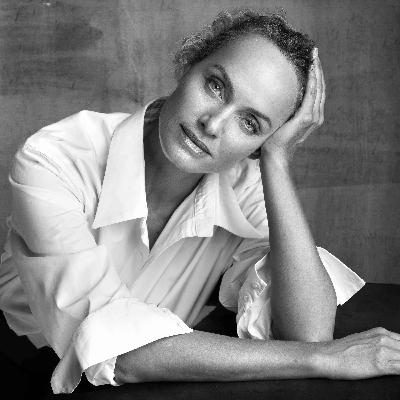


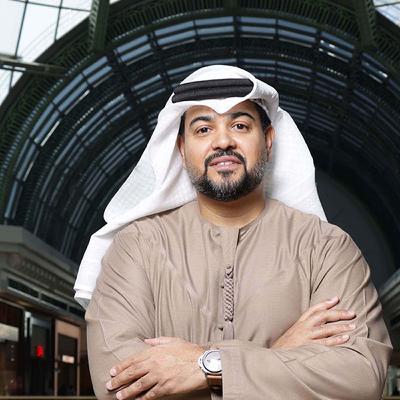


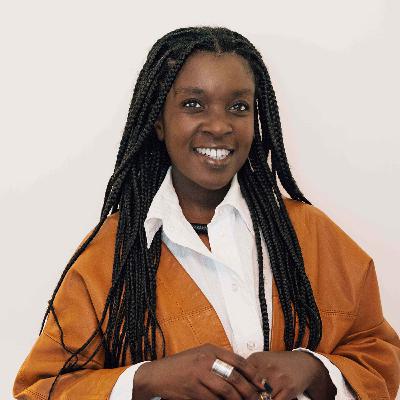
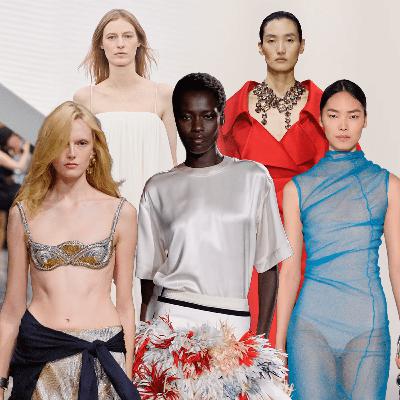
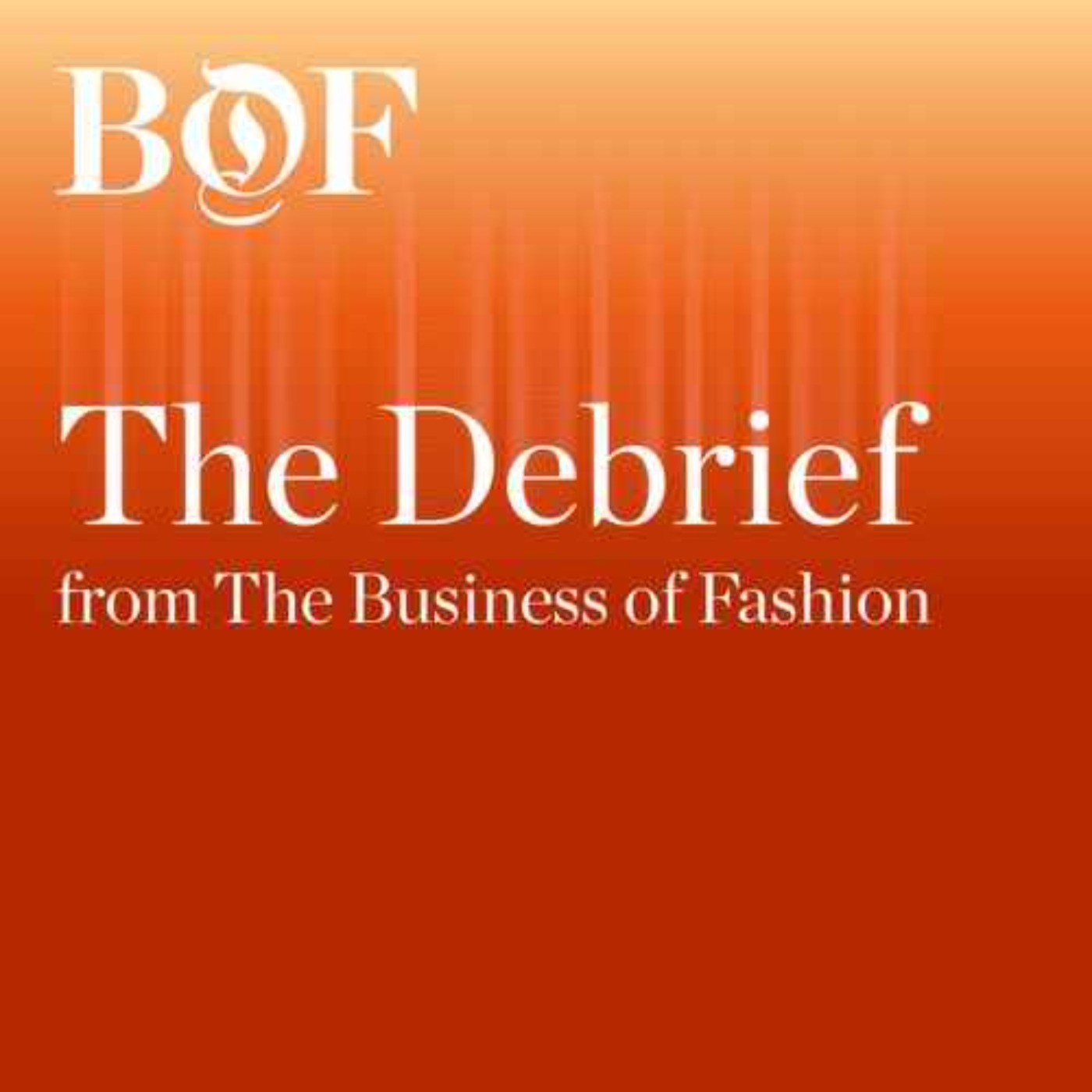
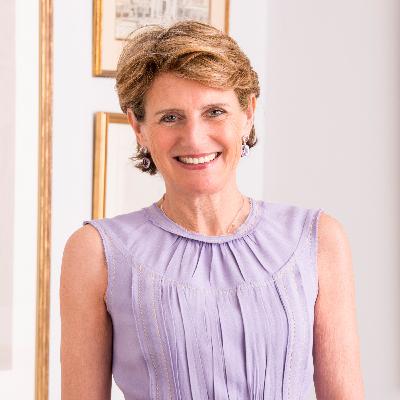




The “Future of Bridal” episode was pure fire – used Imran Amed’s insights to pivot womensalbum.com toward modest & sustainable bridal looks. Traffic from Middle East + eco-brides up 280% this season! https://womensalbum.com/
Oliver Spencer’s journey is so inspiring—especially how he turned secondhand selling into a respected brand while staying true to his vision. It reminded me of how I started getting into vintage fashion myself, often hunting for gems on sites like https://goodwillbins.org/ where you never know what unique pieces you’ll find. It’s all about the story behind the clothes.
One of the standout features of Viana Closet is its attention to detail. From stitching to finishing touches, every garment is meticulously crafted to ensure a high-end look and feel with every wear. https://vianacloset.com
https://celebritylobby.com/ hhhjchgfhgjhj
"I’ve been following 'پادکست فارسی The Business of Fashion Podcast' for a while now, and I have to say, it’s one of the most insightful fashion podcasts out there! The episodes are consistently engaging and well-researched, offering a deep dive into the latest trends and business strategies in the fashion industry. https://smartlink.ausha.co/wilson-ronald/creative-popcorn-packaging-ideas-on-a-budget
such a legend
she is so inspiring ❤️
Woman, life, freedom ✌️ we lost our friends in this movement , thank you to see us .
Thank you for your support 🙏🏻🌹✨
Thank you for being our voice in fashion global
Please be the voice of Iranians. They're taking down the internet and KILLING AND TORTURING INNOCENT PEOPLE. please be our voice!!
it's all a big lie. she lives in Us and doesn't know the truth about Iran. people are protesting against the regime and it has nothing to do with sanctions. if she doesn't like America's policy why don't they send her back here? people think sanctions are fair and agree with America. please don't invite these people. you can interview with Araz fazaeli. at least he doesn't lie.
who thinks of authentic representation when they look at balmain? lmao
Enjoyed
Fashion industry in India have same condition as Bangladesh Factories are facing same problem.
I knew everlane as a "sustainable" and "ethical" brand but this really drives the point home even more
😍😍love Eileen Fischer
this was really interesting! thank you